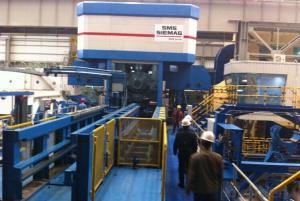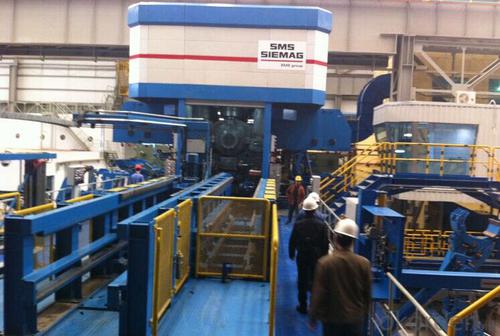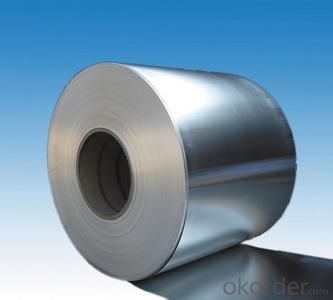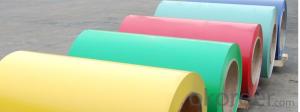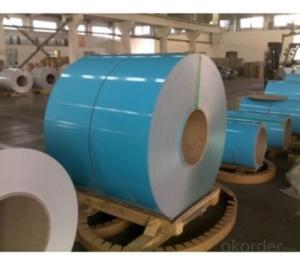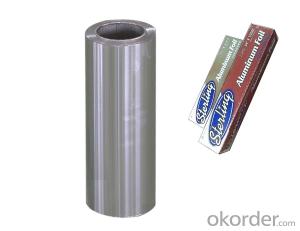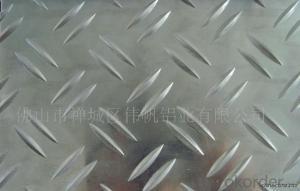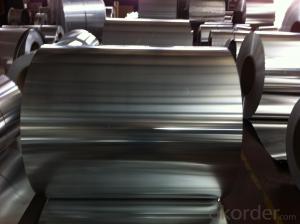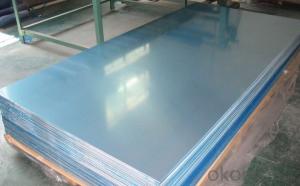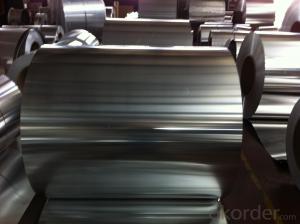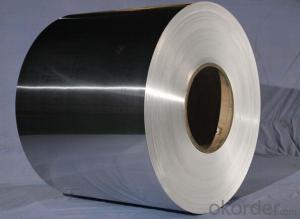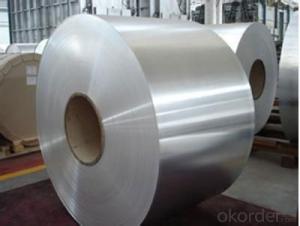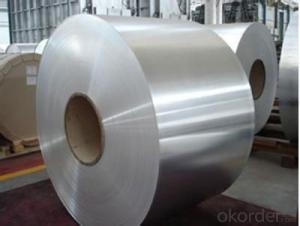Mill Finished Direct Casting Aluminum Strip AA5083 - Aluminum Sheets Calgary
- Loading Port:
- Shanghai
- Payment Terms:
- TT OR LC
- Min Order Qty:
- 80 m.t.
- Supply Capability:
- 5000 m.t./month
OKorder Service Pledge
OKorder Financial Service
You Might Also Like
1.Structure of Product Description
Mill Finished Hot Rolled Aluminium Strip is one kind of semi-finished aluminium coils. This strip can be rolled down to aluminium coil,sheet,circle ect. For the alloy AA5083 is widly used in air plane industry. Its weight is much lower than steel. So now all the air plane have choosed aluminium material instead of steel, it can reduce much cost during the transport process.
2. Main features of the product
a.Competitive price---We have our own mills and can produce mill finished aluminium coils, so we can control the production cost better.
b.Professional after-sale service---We have more than 15 years exportation experience and you need not worry about the exporation problems.
c.Fast delivery time---We can control the delivery time within 35 days.
3. Image:
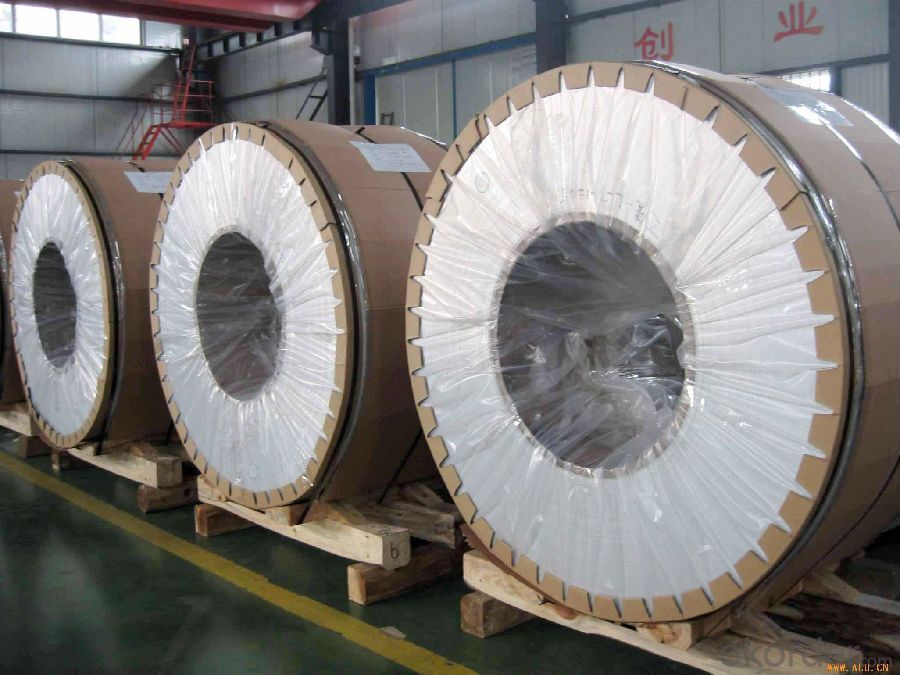
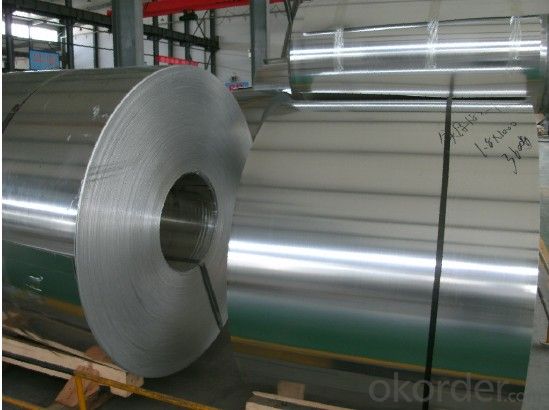
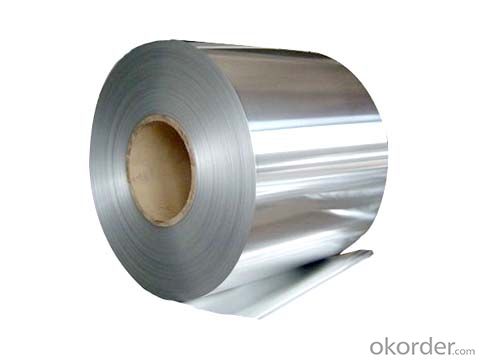
4.Products Specification
| Alloy | Thickness | Thickness Tolerance | Coil Weight | Main Usage |
| AA5083 | 0.2mm-3mm | According to China Standard | 2-2.5 tons | Air Plane |
5.FAQ:
What is the quality standard?
---Usually our standard is GB3880-2006
What is the largest width?
---It is 2300mm
What is the MOQ?
---Usually we can accept 80 tons.
- Q: I want to use one aluminum bottle, rather than several plastic ones. And this may sound stupid, but will an aluminum water bottle be safe to put in the fridge?
- Carefull with using Aluminum to store water you are going to drink. I would use a ceramic or glass container instead. Aluminum is recognized as a NEUROTOXIN. It has no biological function in the metabolisms of human beings. It can bio accumulate in the body and competes with calcium for absorption in the body. There is growing scientific evidence that links increase intakes of aluminum with Alzheimer disease and other brain degenerative disorders. (High levels of Aluminum have been found in the brains of deceased Alzheimers patients, and Aluminum can pass the blood brain barrier) In my sources I have some links to scholarly articles on this matter and the Wikipedia article on Aluminum Please do more research into this matter you will uncover more Good Luck
- Q: Can aluminum sheets be used for electrical wiring?
- No, aluminum sheets are not typically used for electrical wiring. Instead, copper wires are commonly used due to their superior electrical conductivity and lower resistance. Copper wires are more efficient and safer for transmitting electrical currents.
- Q: What are the different methods of joining aluminum sheets without welding?
- There are several methods of joining aluminum sheets without welding. 1. Adhesive bonding: This method involves using an adhesive to bond two aluminum sheets together. The adhesive creates a strong and durable bond, and it can be applied in various ways such as tapes, liquid adhesives, or films. Adhesive bonding is a popular choice as it provides a clean and aesthetically pleasing finish. 2. Mechanical fastening: This method involves using mechanical fasteners such as screws, rivets, or bolts to join aluminum sheets together. These fasteners provide a strong and reliable connection and are commonly used in industries where disassembly or repair is required. Mechanical fastening is also relatively easy to implement and does not require any additional equipment. 3. Clinching: Clinching is a cold-forming process that involves joining aluminum sheets by using a punch and die to create a strong interlock between them. This method is suitable for thin aluminum sheets and offers good mechanical strength. Clinching is a cost-effective alternative to welding, as it does not require any additional materials or heat. 4. Friction stir welding: Although not technically welding, friction stir welding is a solid-state joining process that uses a rotating tool to generate frictional heat between the aluminum sheets. As the tool moves along the joint, it creates a plasticized region that is then consolidated to form a strong bond. Friction stir welding is mainly used for joining thicker aluminum sheets and offers excellent mechanical properties. 5. Folded joints: This method involves folding the edges of two aluminum sheets together to create a joint. The folded joint can be secured by using adhesives, mechanical fasteners, or a combination of both. Folded joints provide good strength and stiffness, and they are commonly used in applications where a seamless appearance is desired. These methods offer various advantages and can be chosen based on the specific requirements of the project, including the desired strength, appearance, and ease of implementation.
- Q: What are the different surface finishes for aluminum sheets in the automotive industry?
- In the automotive industry, there are various surface finishes available for aluminum sheets. These finishes are applied to enhance the appearance, durability, and corrosion resistance of the aluminum sheets. Some of the commonly used surface finishes for aluminum sheets in the automotive industry include: 1. Mill Finish: This is the most basic finish available for aluminum sheets. It is the result of the aluminum being extruded and then passed through a rolling mill. Mill finish aluminum sheets have a smooth, shiny surface but may have slight imperfections or scratches. 2. Brushed Finish: Also known as satin finish, brushed aluminum sheets have a textured appearance achieved by brushing the surface with abrasive materials. This finish gives the aluminum a unique grain pattern and a slightly matte appearance. 3. Anodized Finish: Anodizing is an electrochemical process that creates a protective oxide layer on the surface of the aluminum sheet. Anodized aluminum sheets are highly resistant to corrosion and wear. They can be dyed in various colors and offer a more decorative and vibrant finish. 4. Polished Finish: Polished aluminum sheets have a reflective, mirror-like surface that is achieved through mechanical polishing or chemical processes. This finish is often used for decorative purposes and provides a high-end, glossy appearance. 5. Textured Finish: Textured aluminum sheets have a pattern or texture embossed onto the surface. This finish is commonly used for aesthetic purposes, as it adds visual interest and can help hide scratches or imperfections. 6. Painted Finish: Aluminum sheets can be painted to provide additional protection and improve aesthetics. Painted finishes can be customized to match the desired color or design scheme of the automotive industry. This finish offers excellent corrosion resistance and durability. The choice of surface finish for aluminum sheets in the automotive industry depends on the specific application, desired appearance, and functional requirements. Each finish has its own advantages and can contribute to the overall performance and visual appeal of the automotive parts or components.
- Q: This question asks about the various types of coatings that can be applied to aluminum sheets.
- <p>Aluminum sheets can be coated with various materials to enhance their properties such as corrosion resistance, appearance, and durability. Some common types of coatings include: 1. Anodizing, which creates a protective oxide layer on the surface. 2. Powder coating, a dry coating that is electrostatically applied and then cured at high temperatures. 3. Paint coating, which can be either liquid or powder-based and provides a decorative and protective layer. 4. Vinyl coating, which is a plastic coating applied for a smooth, matte finish. 5. Electrolytic coating, which involves depositing a thin layer of metal onto the aluminum surface. 6. Hot-dip coating, where aluminum is coated with a layer of zinc or other metals by dipping it into a molten bath. Each type of coating serves different purposes and has unique characteristics.</p>
- Q: How do aluminum sheets perform in terms of chemical resistance?
- Aluminum sheets generally have good chemical resistance due to the formation of a protective oxide layer on their surface. This oxide layer helps prevent corrosion and protects the aluminum from many common chemicals. However, aluminum can react with certain aggressive acids and alkalis, so it is important to consider the specific chemical environment when assessing its chemical resistance.
- Q: This question asks for a comparison between aluminum sheets and other lightweight materials like plastic and glass, focusing on their properties and uses.
- <p>Aluminum sheets are lightweight yet strong, offering excellent strength-to-weight ratios. They are more durable and heat resistant compared to plastics, which can deform under heat and are less sturdy. Unlike glass, aluminum is less brittle and does not shatter, making it safer for certain applications. Additionally, aluminum is recyclable and has good thermal and electrical conductivity, which is not the case with plastics. However, plastics are generally cheaper and easier to shape into complex forms, while glass offers better transparency for applications requiring clear visibility. Each material has its advantages depending on the specific requirements of the application.</p>
- Q: Are aluminum sheets easy to clean?
- Yes, aluminum sheets are generally easy to clean due to their smooth surface and non-porous nature, allowing for easy removal of dirt, grease, and stains with regular cleaning agents.
- Q: Can aluminum sheets be used for lithographic printing?
- Yes, aluminum sheets can be used for lithographic printing. Lithographic printing, also known as offset printing, is a popular printing technique that involves transferring an image from a plate onto a rubber blanket and then onto the printing surface. Aluminum sheets are commonly used as the base material for lithographic plates due to their excellent durability, lightweight nature, and ability to hold fine details. The aluminum sheets used for lithographic printing are typically coated with a photosensitive emulsion, which allows the image to be transferred onto the printing surface with precision and accuracy. This makes aluminum sheets an ideal choice for lithographic printing, especially for high-quality and large-scale printing projects.
- Q: Can aluminum sheets be used for reflective insulation?
- Yes, aluminum sheets can be used as reflective insulation. Aluminum has excellent reflective properties, allowing it to reflect heat and light effectively. This makes it a suitable material for insulating applications where reflecting radiant heat is desired, such as in roofs, walls, or attics.
Send your message to us
Mill Finished Direct Casting Aluminum Strip AA5083 - Aluminum Sheets Calgary
- Loading Port:
- Shanghai
- Payment Terms:
- TT OR LC
- Min Order Qty:
- 80 m.t.
- Supply Capability:
- 5000 m.t./month
OKorder Service Pledge
OKorder Financial Service
Similar products
Hot products
Hot Searches
Related keywords
